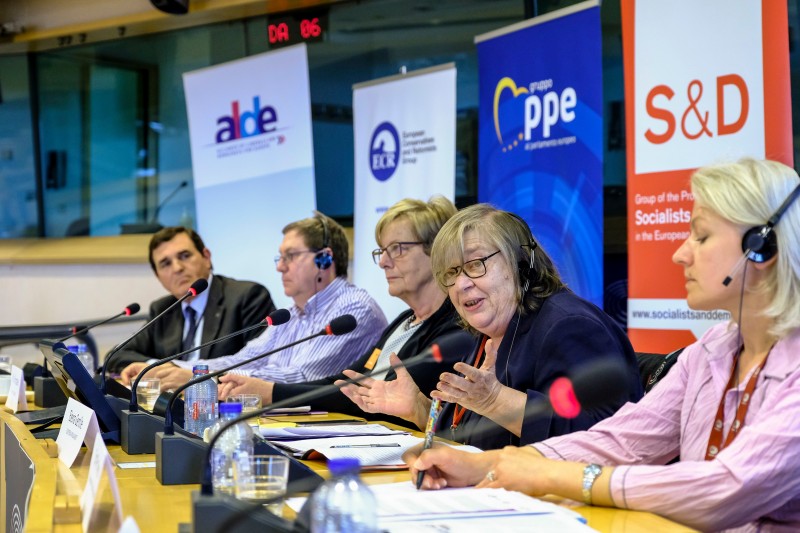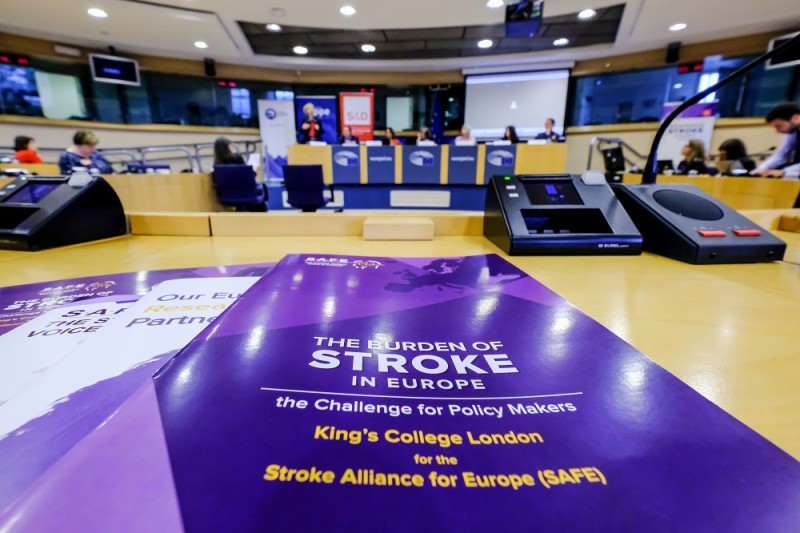The Burden of Stroke in Europe research shows shocking disparities between and within countries along the entire stroke care pathway, with post-stroke support being neglected by all countries.
Brussels, May 11th 2017: Stroke Alliance for Europe is launching today a long-awaited, comprehensive overview of stroke care pathway across Europe. In front of dozens of members of EU Parliament, Jon Barrick, the President of SAFE and Valeria Caso, the President of European Stroke Organisation, jointly presented key findings from the research performed by King’s College London simultaneously in 35 European countries.

The event was co-hosted by four Members of the European Parliament, Elena Gentile (S&D), Marian Harkin (ALDE), Aldo Patriciello (EPP) and Helga Stevens (ECR).
-Even though the death rates from stroke in Europe have been falling over the last 20 years, stroke is a humanitarian catastrophe happening as we speak because more people are surviving stroke and more are being left with disabilities. The overall burden of stroke will rise dramatically in the next 20 years due to an ageing population. Decision-makers in Europe need to find better ways of fighting stroke and making life easier for stroke survivors and their families- said Barrick.
The projections in the Burden of Stroke report indicate that between 2015 and 2035, overall there will be a 34% increase in total number of stroke events in the European Union from 613,148 in 2015 to 819,771 in 2035.
European-wide comparisons of stroke and standardized stroke care are vital to help each country prevent stroke and provide better care and support for everyone affected by stroke.
SAFE is calling for each EU country to have national level collection and audit of stroke data. This supports the monitoring of resources and performance of systems along the whole pathway, which in turn will allow each country to learn from each other and speed up their improvement process. Many millions of people travel around Europe from country to country and it is frightening to think that they may receive excellent care in one country but in another they may die or suffer catastrophic long term disablement due to poor stroke care provision.
-The total cost of stroke in the EU of an estimated 45 billion euros in 2015 is set to rise, including both healthcare and non-healthcare costs. Projections show that the number of people living with stroke as a chronic condition will rise from 3,718,785 in 2015 to 4,631,050 in 2035, representing an increase of 25% or almost one million people across Europe. This is a huge wave coming our way and we better start to prepare for it- emphasized Barrick, adding that a joint action plan on stroke in Europe is a necessity so that the expected 34% increase in numbers of new stroke cases from 2017 until 2035 does not overwhelm national healthcare systems and those families touched by stroke.

SAFE believes that the best way to fight stroke is for every EU member state to have a national stroke strategy actively supported and sponsored by the Government, that covers the whole stroke pathway, from awareness, prevention, diagnosis, treatment, transfer of care, specialist rehabilitation and reassessment, to long-term care and support, social integration and participation in community life and end-of-life care. Representatives from the wide range of professionals who support people with stroke, people who have had a stroke, carers and voluntary associations should all be involved in creating such strategies.
For more information about the Burden of Stroke Report, please visit
www.strokeeurope.eu
Sponsors of the Burden of Stroke Report:





